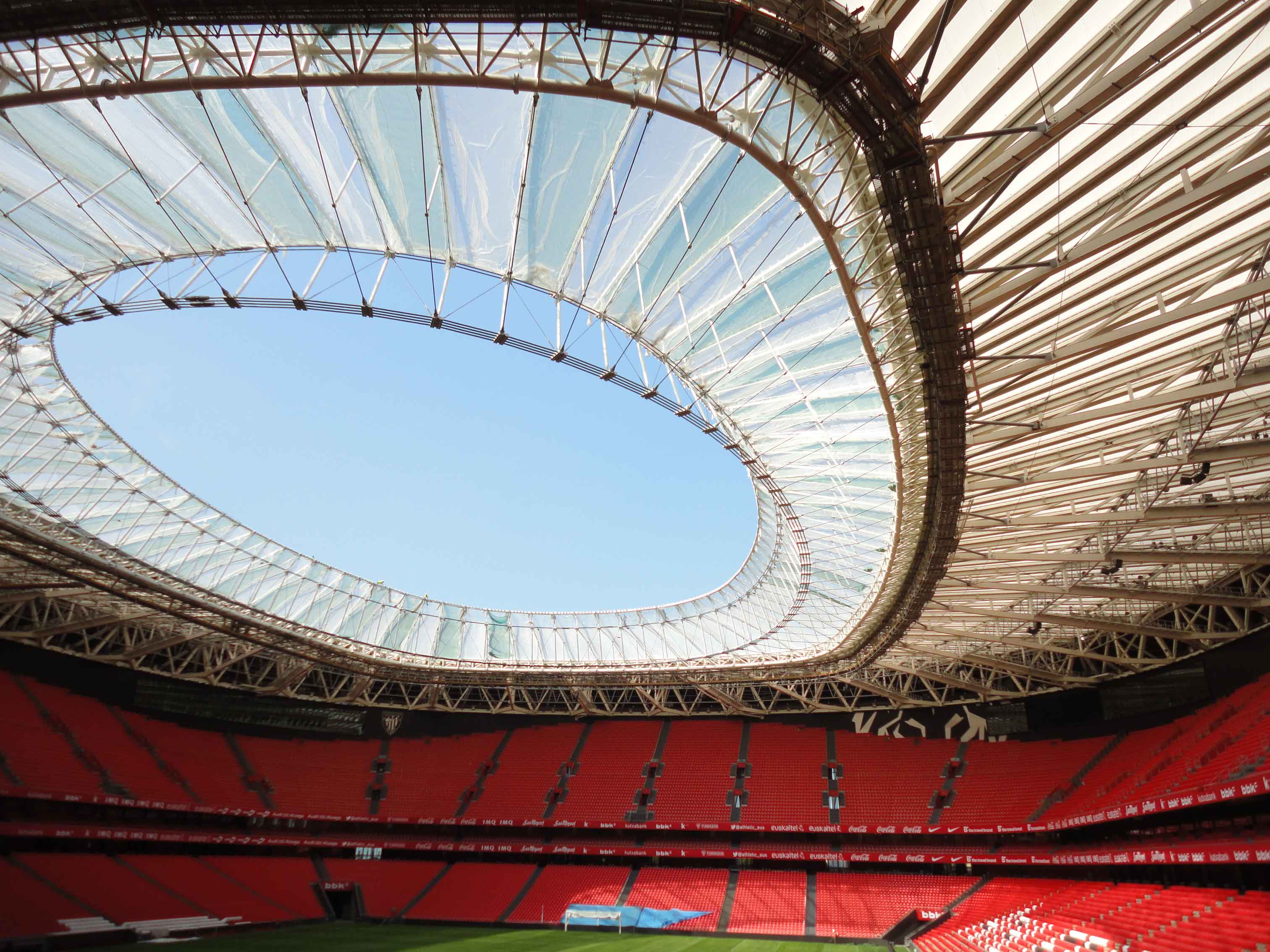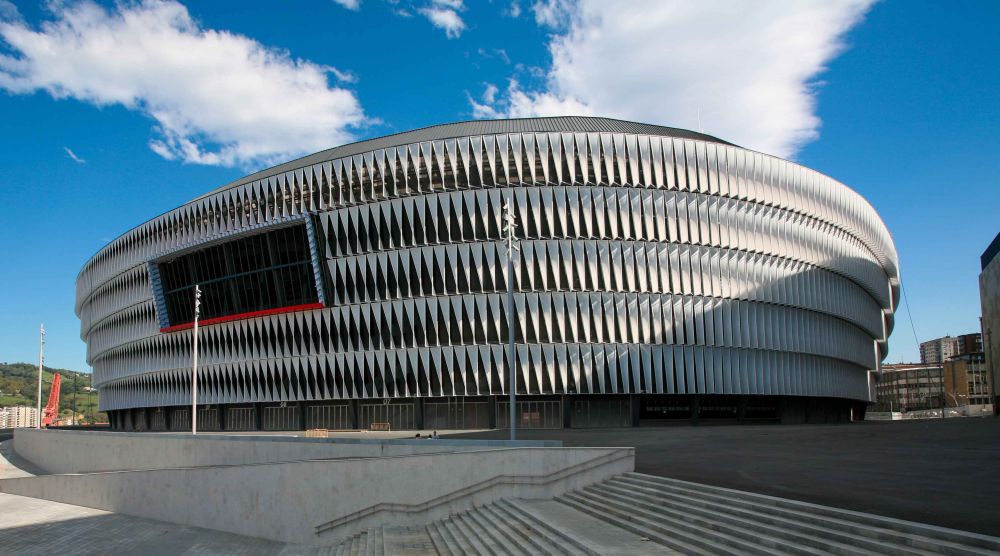
Discover how the San Mamés stadium has marked a milestone in sports architecture, celebrating its tenth anniversary of our textile facade project as an icon of design and functionality.
This year marks the 10th anniversary of the San Mamés stadium, an architectural gem that has revolutionised the concept of design in the world of football. Opened in 2013, this stadium has not only been the home of Athletic Bilbao, but has also served as a model of innovation and sustainability in modern sports architecture.
¿Who designed San Mamés?
Architectural firm César Azcárate & Associates, in collaboration with IDOM, faced the challenge of creating a stadium that would respect the club's rich history while introducing contemporary technologies and aesthetics. With a capacity of over 53,000 spectators, the stadium was built with the vision of integrating the public closer to the action, enhancing the fan experience and optimising every aspect of its structure for visibility and comfort.
The Textil Facade
One of the most distinctive features of San Mamés is its textile facade. This innovative envelope is not only aesthetically impressive, but also fulfils practical sustainability and light integration functions. The facade is composed of ETFE panels, a lightweight material that allows natural light to enter and reduces the impact on the carbon footprint thanks to its lightness. The more than 2,700 white ETFE panels serve as a canvas at night to decorate the exterior with LED lighting.
The louvres and their arrangement create a direct connection to the outside from the internal area of the access roads, creating an architecturally enriching experience for the user.
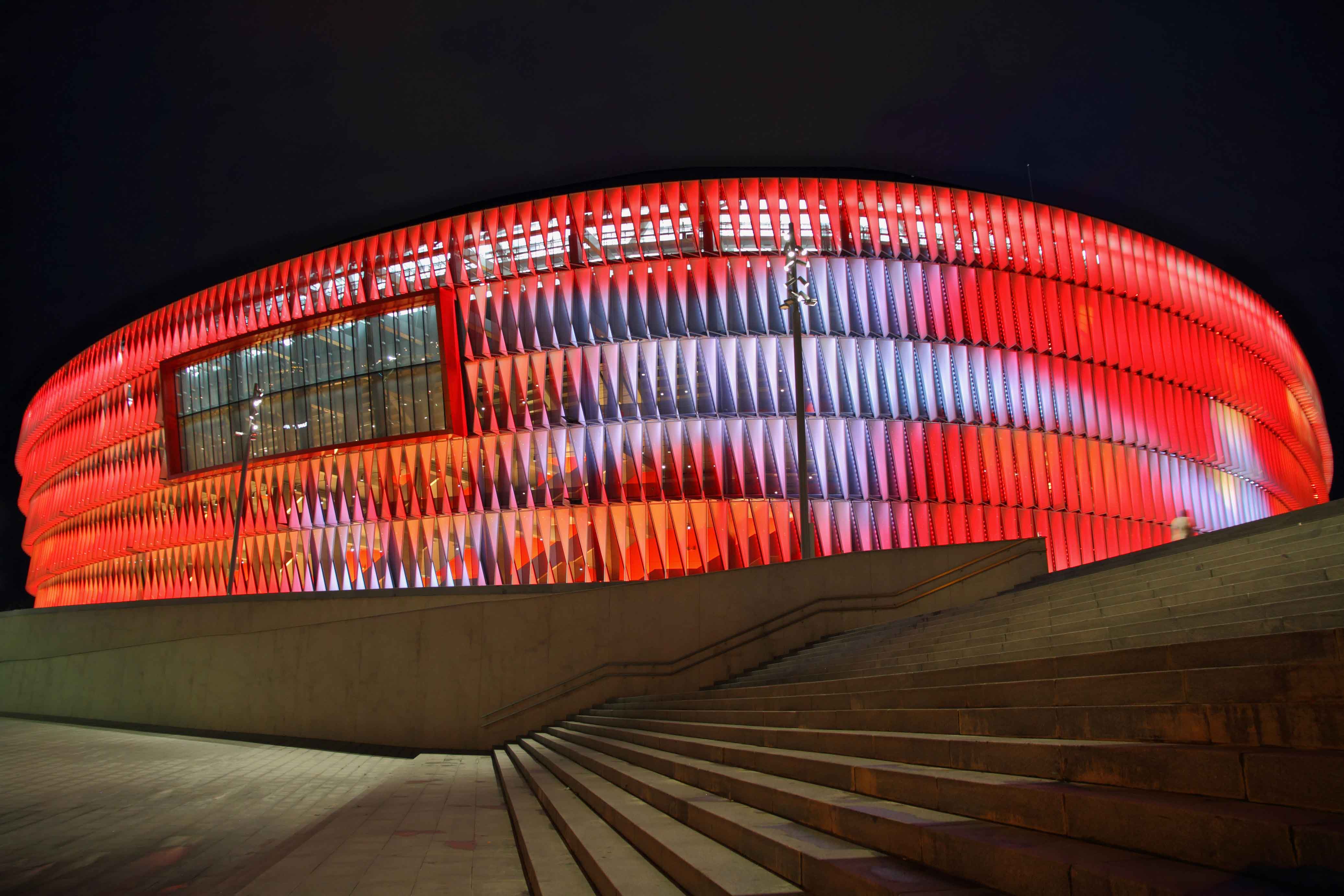
The best stadium in the world in 2015
In 2015, just two years after its inauguration, San Mamés was awarded the title of the best stadium in the world by the prestigious World Architecture Festival. This recognition not only underlined the excellence of its architectural design but also San Mames' ability to set a new standard in the construction of sports stadiums worldwide.
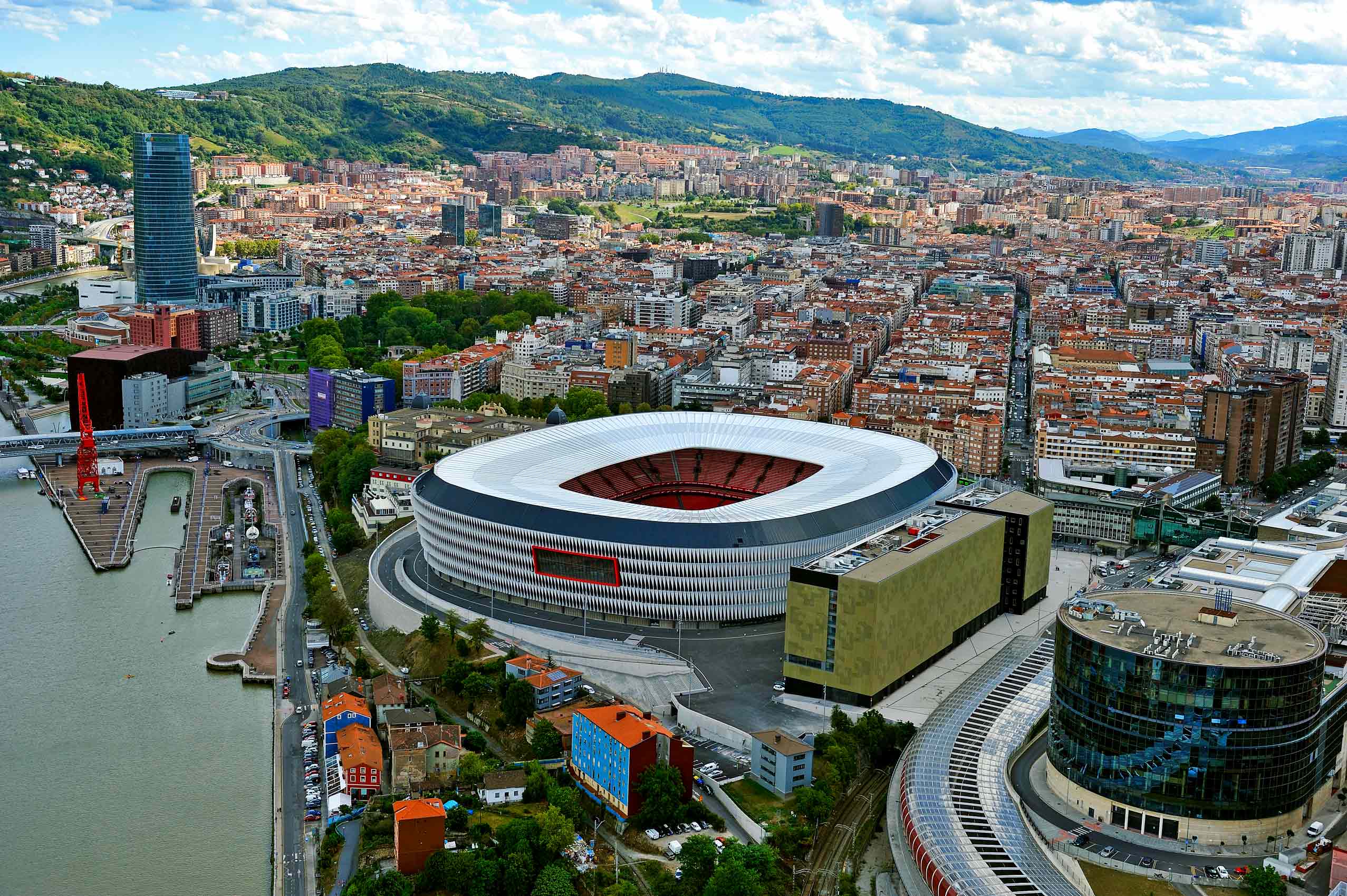
The Role of Technology in San Mamés
The stadium is notable not only for its architectural design but also for its integration of advanced technologies that enhance the spectator experience. These include state-of-the-art lighting and sound systems, universal Wi-Fi access that allows spectators to share their experience in real time, and enhanced security systems that ensure a safe and secure environment for event attendees.
A cultural symbol of Bilbao
San Mamés has had a significant impact on the city of Bilbao, becoming a symbol of modernity and an engine of economic change. The stadium has revitalised the surrounding area, attracting business and tourism that benefits the entire region. It is also a meeting point for the local community, hosting events that go beyond sport, such as concerts and cultural events.
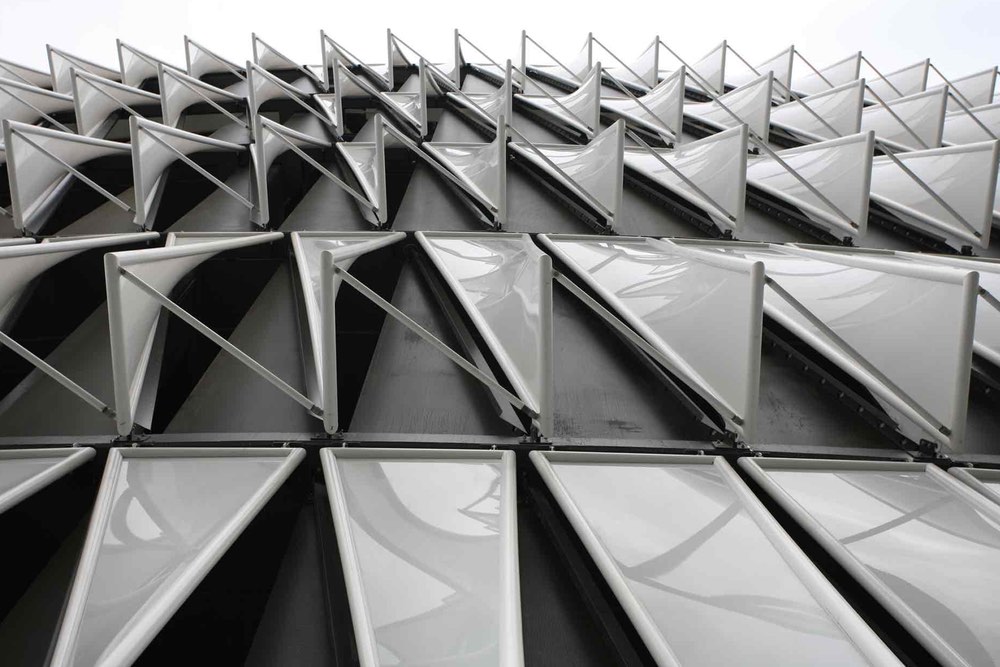
Is San Mamés a sustainable stadium?
The design of San Mamés also focuses on sustainability. The stadium uses water and energy management solutions that minimise its environmental impact. Rainwater harvesting systems and efficient energy use are just some of the eco-efficient practices that have been implemented.
San Mamés' influence
Ten years after its inauguration, San Mamés not only remains an architectural icon, but has also established itself as a model for future stadium developments around the world. Its influence extends to projects that seek to effectively integrate community, technology and sustainability.
Example of versatility
San Mamés is not just a stadium, it is a landmark in sports architecture that has marked the last decade with its revolutionary design. As we celebrate its tenth anniversary, its legacy continues to inspire architects and designers around the world, proving that sporting spaces can be both functional and artistic.
